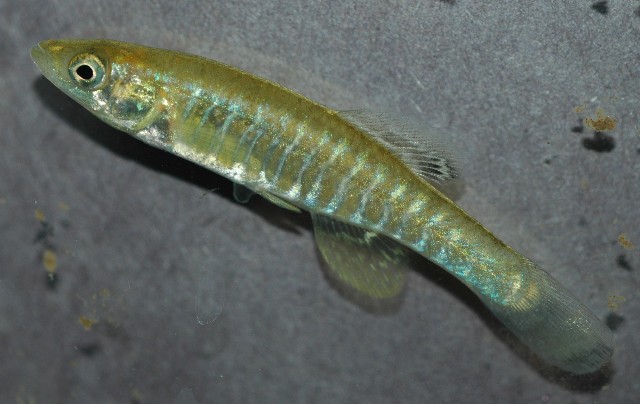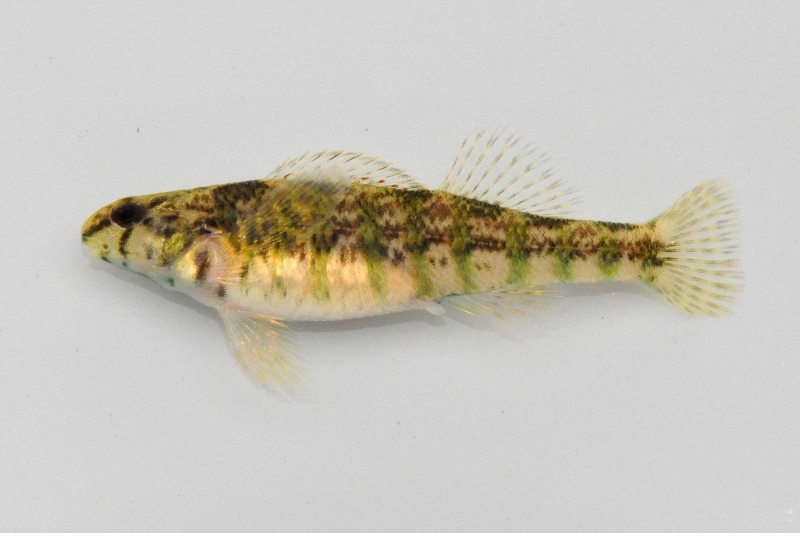Western Banded Killifish
(Fundulus diaphanus menona)


There are two subspecies of banded killifish in Ohio. The native Western banded killifish (left) and the introduced Eastern banded killifish(right). Both photos are males.
Description
There are two subspecies of banded killifish found in Ohio. The native Western banded killifish and the introduced Eastern banded killifish. The Western banded killifish has 12-15 vertical bands along its side and only 6-8 of these bands are found from the front edge of the dorsal fin forward. The very similar Eastern banded killifish has greater than 15 vertical bands and 8-10 of these are found from the front edge of the dorsal fin forward. On both subspecies these bands can be a silvery blue color on breeding males and are dark vertical lines on females and non-breeding males. Additionally the bands become shorter and wider as they approach the tail on the western banded killifish and often are fused together appearing as a blotchy line. On the Eastern banded killifish these remain separate and thin.
Habitat and Habits
Western banded killifish are found in areas with an abundance of rooted aquatic vegetation, clear waters, and with substrates of clean sand or organic debris free of silt. They were historically found in natural glacial lakes and slow moving streams in the northern part of the state and in the bays and mashes along the Lake Erie shoreline. Today they can still be found in some tributaries of the Portage River system in Wood County and in Miller bluehole of Sandusky County. They may also still be found in some of the natural lakes of northeast Ohio. The Eastern banded killifish was introduced to the upper Ohio River system of Western Pennsylvania in the 1930's. It was first found in Ohio in 1944 in the Ohio River near the Pennsylvania line. It has since spread to numerous localities in the Ohio River. In 1975 the Eastern banded killifish was discovered in Lake Erie near Ashtabula and has been found in other localities since then. More recently they have been found in a few inland Ohio reservoirs including Pymatuning and Piedmont. The Eastern banded killifish is apparently less sensitive to murky waters and sparse vegetation. It is possible these fish have become established by anglers releasing unused bait. If you have left over bait minnows they should be dumped on land or disposed of in another manner, not released.
Reproduction and Care of the Young
The Western banded killifish lives and spawns in dense vegetation. Spawning occurs when water temperatures are around 73oF. Females lay between 50 and 100 eggs. Eastern banded killifish spawn at similar temperatures but will use sparse amounts of vegetation for spawning.